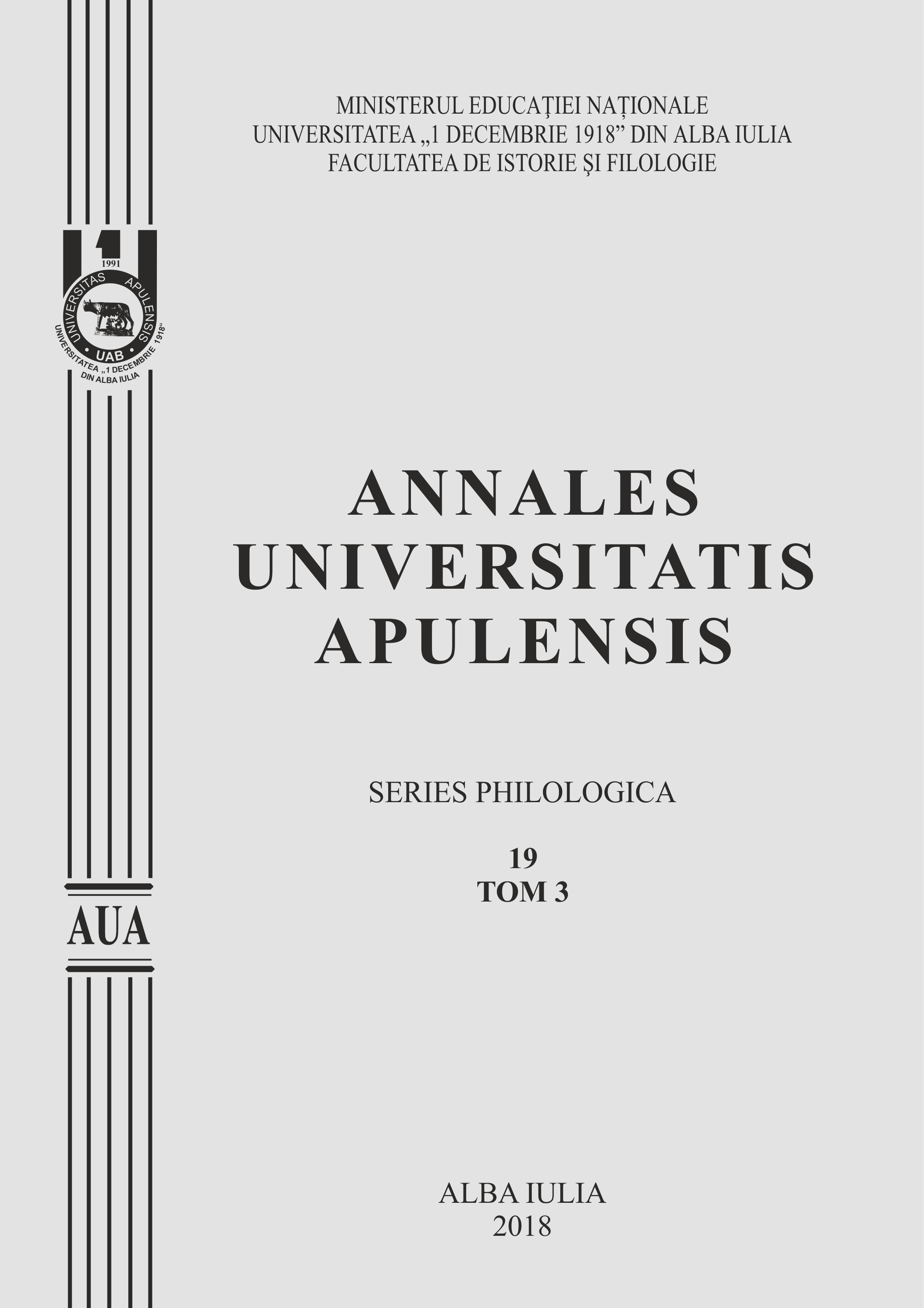WILLIAM FAULKNER – PARTICULARITĂŢI ÎN CONSTRUCŢIA ARHITECTURII ROMANEŞTI
WILLIAM FAULKNER – PARTICULARITIES IN THE CONSTRUCTION OF THE NOVEL’S ARCHITECTURE
Author(s): Ingrid Cezarina Elena BarbieruSubject(s): Language and Literature Studies, Studies of Literature, Other Language Literature
Published by: Universitatea »1 Decembrie 1918« Alba Iulia
Keywords: the novel’s architecture; Snopes’ trilogy; William Faulkner; modern literature; literary technique;
Summary/Abstract: William Cuthbert Faulkner (25th of September 1897 – 6th of July 1962) is one of the most essential pillars during the birth of the modern novel. His masterpieces illustrate the innovations produced by the novel’s literary art, which refers especially to the use of the interior monologue technique, to the literary painting of the local color of the southern literature and inventing, in both a mythic and realistic manner, a whole fictional region, Yoknapatawpha. In addition, Faulkner will constantly experiment new and new literary techniques in order to represent the mechanisms of mind and memory functioning as concise as possible, his most important contribution being the implementation of the technique of consciousness flow, technically used exceptionally by James Joyce and Virginia Woolf. In 1925, thanks to his friend, Sherwood Anderson’s encouragement, Faulkner will develop his own literary style, grounded in his appeal to the features of his native places.His first novels, including Soldier's Pay (1926), Mosquitoes (1927), The Sound and Fury (1929), As I Lay Dying (1930), Sartoris (1929) are experimental attempts to explore, draw and transfer into the fiction the unexplainable aspects of the psyche. By directly contacting Freud's ideas and experimental prose by Joyce, through his numerous travels on the European continent, Faulkner creates his own literary style by developing and using in his novels the traditional literary techniques, such as the inner monologue or the multiple perspectives technique. The comic, the tragic, the grotesque and the absurd intertwine in Faulkner’s prose, following the sinuous route of the human psyche. Individual, social and cultural psychology are key pillars in shaping Faulkner’s characters, contributing to the southern collective mentality displaying and building an image of the local color. Theorized by Jung, the collective subconscious represents the informative mental network to which each member of the human species is connected and which gives him access to a series of knowledge, habits, archetypes or beliefs. Thus, the fictional domain created by Faulkner, Yoknapatawpha, will illustrate this network of South American collective subconscious mind, from mentality to the social system. Another influence in the sphere of psychoanalysis is the Freudian theories that address the diversity of the reactions of the human psyche, identified in various instances. Starting from these theories, Faulkner will create a unique way of describing individual psychic processes. His prose contains not only influences from the sphere of psychoanalysis, but also influences from Shakespearean and Victorians literary styles.
Journal: Annales Universitatis Apulensis. Series Philologica
- Issue Year: 19/2018
- Issue No: 3
- Page Range: 51-56
- Page Count: 5
- Language: Romanian

